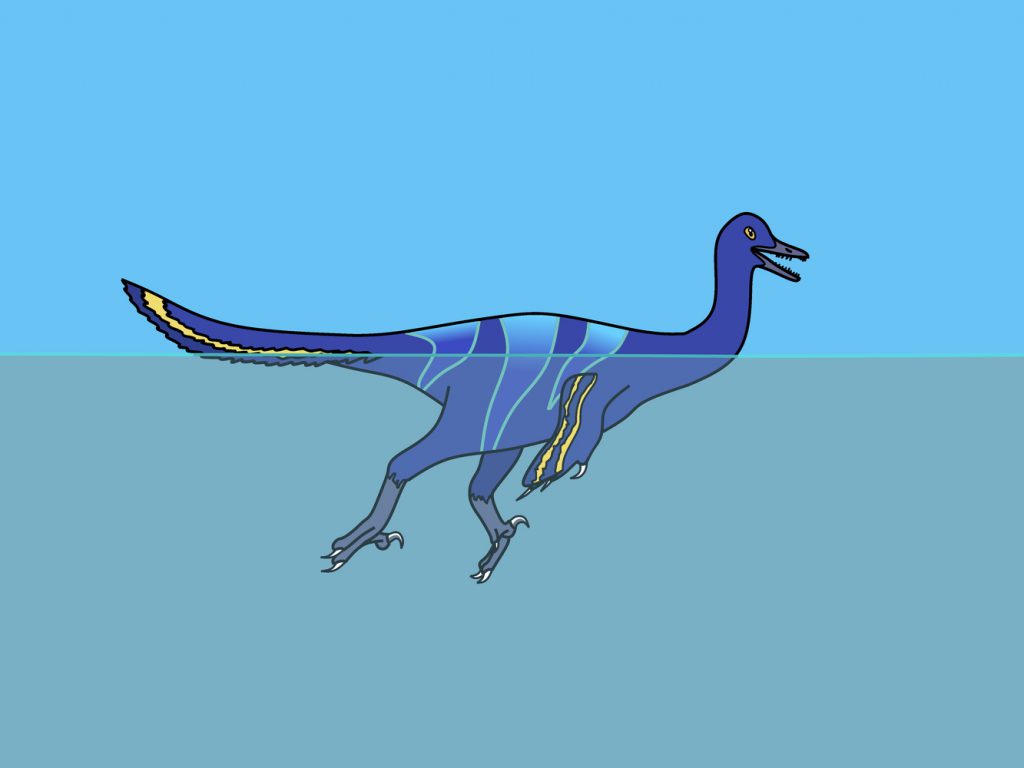Haltz-kah-rap-tor

A swimming raptor
Halszkaraptor was a small dromaeosaur roughly two feet (60 centimeters) long, and it was not what you would expect. Why was Halszkaraptor (hal-z-ka-rap-tor, meaning “Halszka’s thief”) so different from other raptors? It was almost certainly semi-aquatic.
Halszkaraptor had the famous “killer claw” of most raptors, and probably webbed feet. These certainly would have helped it maneuver through the oasis of the cretaceous Gobi desert. However, its wings are very similar to today’s diving birds, suggesting it used these to power its dives. When Halszkaraptor dived, it caught small fish with its many teeth, more than most dromaeosaurs had. Halszkaraptor’s snout was very special. From above, it looked U-shaped, and on it were many electro-sensory organs that detected the electricity given off by a fish’s muscles. This would greatly have helped it hunt in dark or murky water when it couldn’t see. Halszkaraptor’s tail was also unique. It was not stiff like other dromaeosaurs, but flexible and also shorter. This put the center of gravity further up the dinosaur’s body, making swimming easier. With a long heron-like neck perfect for striking at fast-swimming fish, combined with a shorter tail, Halszkaraptor would have walked more upright then most other non-avian dinosaurs. Known from an almost complete specimen, we know a lot about this interesting dinosaur.
Sources
http://www.eartharchives.org/articles/the-swimming-raptor-of-mongolia/
http://www.prehistoric-wildlife.com/species/h/halszkaraptor.html
